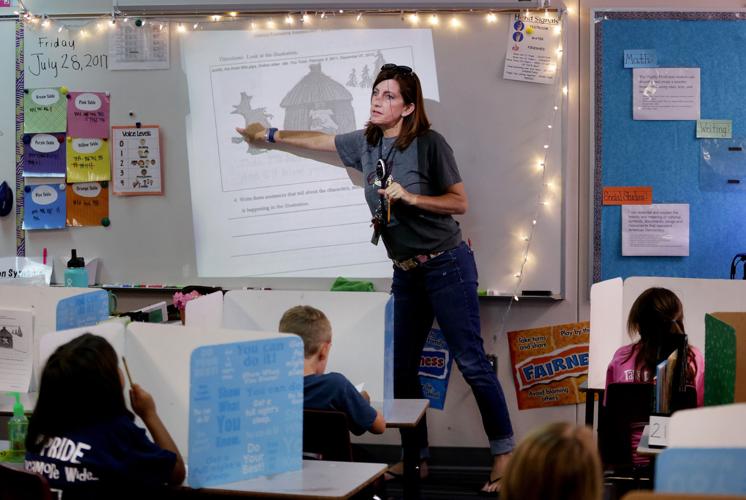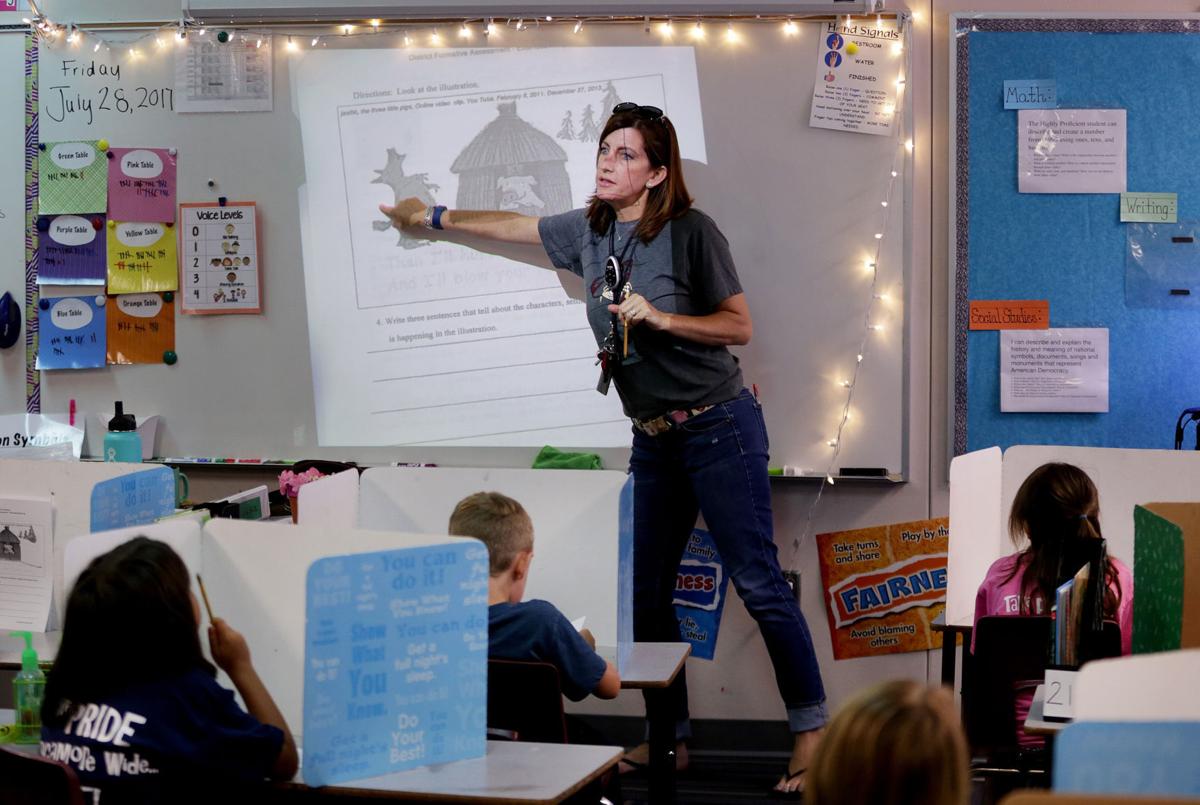After a three-year break, schools around the state are preparing to once again don their badges of honor, or scarlet letters, as the state Department of Education issues new A-through-F accountability grades.
Although the A-through-F rankings are often criticized as an overly simplistic representation of a school’s performance, the grades can have a big impact on a school’s reputation, educational priorities and state funding.
And for many public schools in Pima County, their grades are slipping.
Comparing the state’s old scores and new scores is like comparing apples and oranges, school districts say. But they also acknowledge that parents are used to apples, and when they see the new oranges, they may be a little shocked.
Vail School District Superintendent Calvin Baker emailed his district’s parents last week to warn them the grades might not be as good as they’ve come to expect.
“Under the previous system almost all schools in Vail typically received an ‘A’ grade. That may change under the new system,” he wrote, adding, in a bold font, that, “The new system is significantly more difficult.”
Baker would know: In his role as a member of the Arizona State Board of Education, he helped develop the model used to determine letter grades.
Vail’s overall grade-point average on the state ranking system dropped from a 3.9 to a 3.7 — still the highest GPA in Pima County by far.
Other school districts saw much sharper declines under the new A-through-F formula.
Tanque Verde Unified School District’s overall GPA dropped a full grade, from a 3.75 to a 2.75.
Amphitheater Public Schools dropped from a 3.1 GPA to a 2.3. Sahuarita Unified School District dropped from a 3.0 GPA to a 2.3. And Tucson Unified School District dropped from a 2.5 GPA to just below 2.0, the worst overall score of any district in Pima County.
The new accountability model is designed to take into account a more diverse set of success metrics than the previous ranking system. But it is still based in large part on a single standardized test, the AzMERIT test, which is a more rigorous test than the old AIMS test, upon which the previous rankings were based.
The new grading system gives a lighter weight to the AzMERIT test and takes into account other factors like high school graduation rates, college and career readiness indicators and English-language-learners’ scores.
The results, which school districts received last week, are still preliminary. Schools have the opportunity to appeal their grades, and the state Board of Education is considering further tweaks to the grading formula.
But of the 175 public district schools that received letter grades from Pima County’s nine major public school districts in both 2014 and 2017, 80 schools dropped at least one letter grade under the new formula.
A quarter of those dropped at least two letter grades. Four of those schools plummeted three letter grades, and one school, Tucson Unified School District’s Drachman Elementary, fell all the way from an A to an F.
An additional 68 schools held their ground, retaining the same letter grade they earned in 2014, the last time the state issued school grades. And there were a few bright spots: 27 schools improved their letter grades. Tucson Unified School District’s Robison Elementary and Sunnyside Unified School District’s Summit View Elementary both climbed from D’s to B’s.
One of the Board of Education’s goals was to ensure the new formula, at least in theory, would allow every school the opportunity to earn an A grade.
In reality, more of Pima County’s public schools earned D’s and F’s than A’s.
School administrators say that because the State Board of Education just finished drafting the formula last month, they were caught unaware of the criteria impacting their grades, much of which was applied retroactively from last school year.
TUSD Superintendent Gabriel Trujillo said he knew AzMERIT would be a big part of the grade, but he didn’t know what else would go into the grades, which made it hard to capture every point possible.
“There’s a whole lot of other criteria that was applied to schools before the schools knew that was the criteria that they would be graded on,” he said.
For example, the test heavily emphasizes students’ growth year over year.
That growth formula aims to ensure that schools with students who come in underperforming and improve are rewarded, and that schools that have performing students aren’t allowed to coast and continue to get A’s, even if students don’t improve, according to Baker.
In other words, the growth formula tries to level the playing field between rich and poor schools.
But poverty is still one of the strongest indicators of student performance on the AzMERIT test, and the A-through-F grades.
The correlation is stark. Only two schools where less than half the student population receives free or reduced-price lunch received D’s, and none received F’s.
Conversely, only three schools where more than half the student receive free and reduced-price lunch received A’s.
There are some exceptions. TUSD’s Van Buskirk Elementary received an A grade, although 95 percent of its students qualify for free and reduced-price lunch. Sunnyside Unified School District’s Elvira Elementary received an A, with 90 percent of its population receiving free or reduced-price lunch. And Flowing Wells Unified School District’s Walter Douglas Elementary received a B grade, though 91 percent of its students qualify for free or reduced-price lunch.
But the grades aren’t just for parents to evaluate schools. Starting next year, they’ll also be used as the basis to determine if schools should receive additional “performance funding” from the state.
And Steve Holmes, Sunnyside’s superintendent, says he worries that the same growth formula that is supposed to ensure lower-income districts like Sunnyside can compete with those that are more affluent is actually going to come back to bite some of his schools.
This year, two Sunnyside schools qualified for an extra $400 per student in performance funding because the schools were among the high-poverty schools that scored the best on the AzMERIT test in the state.
He said because the two schools — Gallego Intermediate and Primary schools — didn’t show year-over-year growth, they didn’t earn A’s. And starting next year, only schools that receive A’s, rather than schools with high AzMERIT scores, will be eligible for performance funding.
“I still think it’s the right thinking, the idea of growth, but it’s also an eye-opener for school districts to keep an eye on all kids. We do focus on kids that aren’t performing a lot, we focus on that subgroup. But if the kid is meeting or exceeding expectations, quite honestly, a lot of times we just expect them to continue performing. Now if they flatline, that’s when we’re in trouble,” he said.
David Baker, Superintendent of the Flowing Wells Unified School District, said that while the grades are helpful for parents to quickly evaluate a school’s performance, it’s an overly simplistic representation that doesn’t capture a lot of what goes on in a school or classroom.
“I think we’re trying to make a complicated process of evaluating the effect of a school on a child’s educational development into a very narrow A-through-F label. And that’s very hard to do,” he said.











